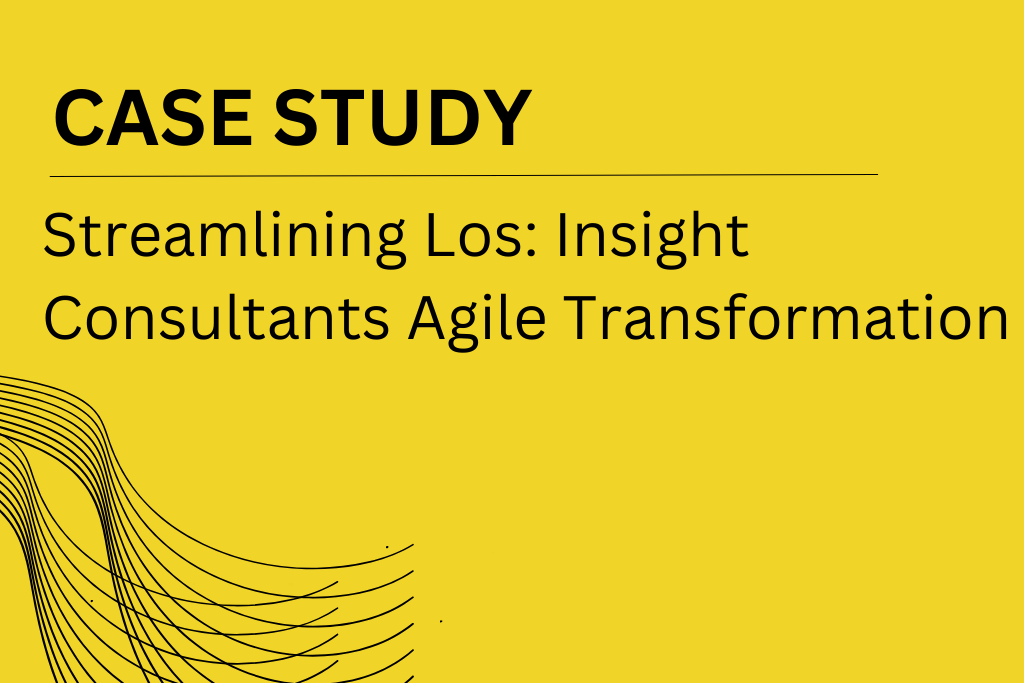Insight Consultants have been involved in the design, development
Category: Technology
The fact is, as many of 30% of adults in today’s credit market are virtually invisible to traditional screening methods. The growing population of digital natives, students, and recent immigrants do not fit neatly into the spending and borrowing habits of previous generations. Most lending tools do not recognize this massive opportunity. It is not fair for either borrower or lender. The introduction of advanced AI & alternative data makes the process of consumer lending fast, more accurate and efficient. It uncovers the full potential of customer data and delivers better financial return, while cutting down expenses.
So, let us see how Artificial Intelligence and Alternative Data help lenders grow in today’s changing market.
AI and Alternative data, the game changers
AI-powered analytics and alternative data provide the predictive analytics that lenders need in a world of tightening credit, digital innovation, and increased competition. These new tools help lenders see more, accept more, and grow more.
By leveraging on alternative data, it will not only allow you to have a holistic customer view and identify the trends and patterns, but also include external factors like market trends, political issue, economic changes, social factors to accelerate timely and precise credit assessment that provides you 360-degree view on customers’ credit behaviour and potential risk. Initiating your first step correctly and effectively is extremely important to ensure accurate predictions and help you to make better decisions towards your desired outcome.
Using AI and unique, uncorrelated, alternative data, lenders can identify the millions of creditworthy customers that traditional screening miss, even from thin- file and no-file households. A generation of digital natives qualifies for the credit they deserve, while lenders gain fast, fair, and frictionless access to the consumers they need to grow business, reduce risk, and maximize profits.
Here are different ways AI & Alternative data positively influence the changing credit market.
Improved assessment of creditworthiness using alternative data: Effective credit risk management begins with finding the right data for today’s growing market segments. The Consumer Financial Protection Bureau (CFPB) estimates that 26 million Americans are credit invisible or “no file”—they have no credit history with nationwide consumer reporting agency. Traditional account screening services deliver little or no predictive insights to several consumers. By combining uncorrelated alternative data with traditional credit scores, lenders can maximize the data coverage for their markets—an absolute requirement for optimizing revenue growth.
Predictive Analytics to make profitable decisions: When it comes to AI powered analytics, one size does not fit all. Lenders have various business goals and tolerance for risks. Markets vary by industry and patterns of risk. The most effective use of AI tailors AI-powered analysis for specific lenders, and then refines that analytical model over time, giving lenders an increasingly predictive and accurate score for credit risk assessments.
By customizing analytics and refining those analytics over time, lenders can optimize their loan-decision processes for growth. By applying customized AI-powered analytics to alternative data, lenders can discover predictive signals that other screening services miss, leading to 20-30% more profitable accounts.
Using AI to bring transparency to compliance: By using sophisticated AI techniques to analyze disparate types of traditional and non-traditional data, it is possible to separate the signal from the noise and deliver insights that are both predictive and interpretable. Explainable AI enables lenders to apply AI techniques at the top of a data waterfall, accepting more profitable accounts before additional data costs are incurred. When lenders use Explainable AI to gain predictive insights, they can grow profits while helping ensure compliance.
Optimize Waterfall: The ability to bring custom analytics to your data waterfall offers a powerful advantage for lenders looking to add customers and reduce risk. Lenders should look for credit risk scores with easily integrated APIs and insights that can be applied to any point in data waterfalls, giving lenders the freedom and flexibility to tune loan-decisions for the best possible results.
Insight Consultants can help you in
1.Reaching out to potentially profitable accounts that traditional screening misses
2. Fine-tuning data waterfalls to deliver more predictive insights at any stage.
3. Re-evaluating rejected applicants with more accurate assessments.
4. Establishing the most effective metrics for making lending decisions
Reach Out to us to grow your profitable accounts while reducing risk, First Payment Default (FPD), fraud, and charge-offs.
Transform Credit Union functioning with Cloud Migration

Member service is the pillar of Credit Union Industry. Credit Unions strive to make their services more efficient to their customers. At the same time, it is true that credit unions have tough job on their hands to make themselves more attractive to the millennial generation. When it comes to facing competition from retail banks… Continue reading Transform Credit Union functioning with Cloud Migration
Artificial Intelligence: game changer for Credit Unions

The pillar of the Credit Union industry is member service. Credit Unions have strong relationships with their members and strive to do what is right. Here Credit Unions must be for ways to make their services more efficient and profitable to. Process automation is the first step. The second step is when even the decision… Continue reading Artificial Intelligence: game changer for Credit Unions
SME lenders already know that the market offers a huge opportunity, but also know that it’s incredibly difficult to drive high approval rates without increasing risk. Finding the technology, implementing your risk strategy and effectively wrangling the risks in an ever-evolving industry is a big challenge.Here Credit scoring models provide an opportunity for lenders to more efficiently evaluate loan risks and lower the costs of small-business lending.
Scoring Model: Learn from the past and anticipate future
Scoring Models help lenders in emerging markets standardize and improve their lending decisions. These models define customer scoring based on a statistical analysis of past borrowers’ characteristics instead of using judgmental rules.
- Credit Scores – a number that represents an assessment of the creditworthiness of a person, or the likelihood that the person will repay a loan.
- By analyzing a sample of historical client and business data, trends are deduced to better understand (potential) clients and predict future events such as credit repayment.
- Scoring is a method of assigning a numerical value (the “score”) to a client in order to predict how likely he or she is relative to others to experience some event or perform some action in the future. This is predicated on the notion that past behavior is indicative of future behavior for populations with similar characteristics.
Credit Scoring may alter small-business lending in several ways:
Borrower-Lender Interaction: Traditionally, a small-business need to meet with a loan officer in person and apply, including financial statements, business plans and a variety of other records. In fact, by using a credit-scoring system, a lender with no physical presence in a community can lend money to small businesses without ever seeing a business plan or financial statements.
Loan Pricing: The price of small-business loans will decline for higher-credit quality borrowers under credit scoring because these borrowers no longer have to bear the cost of a full human underwriting. Some businesses that previously had been thought to be high risk under a traditional underwriting system may be classified as lower risk under a credit scoring system.
Availability of Credit for Small Business: Repayment prospects of a small-business applicant makes it more likely that a lender will price the loan according to its expected risk. This prospect should increase the availability of credit to small businesses.
Increased Lending Opportunities: Lenders who use credit scores have the confidence to approve more loans, because credit scoring gives them more precise information on risk and other credit factors.
Fair Credit decisions: Using objective credit scoring, lenders can focus only on the facts related to credit risk, rather than their personal feelings. Factors like your gender, race, religion, nationality and marital status are not considered by credit scoring
For the lender, scoring leads to process automation, which facilitates process improvements, leading to many byproducts such as improved management information, control and consistency. It also increases the profitability of SME lending by reducing the time and cost required to approve loans and increasing revenues by expanding lending opportunities and service levels.
For evaluating loan proposals and for facilitating SME financing, firms would need to employ low-cost and quick decision-making alternatives. The use of credit scoring models can go a long way in facilitating lending decisions by reducing costs and increasing service levels.
Financial sector is becoming increasingly competitive and facing several threats from various areas. Threats like, those coming from regulators, the expectations of investors, emergence of new competitors, expectation of customers who expect to access funds and make loan requests through a multitude of digital channels, all put the lenders in weak position.
Smart lenders minimize their risk by knowing exactly what they are getting into, and how predictable they can forecast activity on the loans. To boost the quality of the overall loan portfolio, lending firms need to reset their value focus and digitize their credit risk process.
Digitization offers huge potential to improve credit risk management. It is likely to result in more transparency of risk assessment. It allows lenders to make rapid assessments of the credit worthiness of applicants quickly.
Digital trends in financial industry
- Changing customer expectations
- Tighter regulatory control requiring greater risk function effectiveness
- Growing importance of strong data management and advanced analytics in staying competitive
- New attackers driving business-model disruptions
- Increasing pressure, especially from financial-technological companies, on costs and returns
Digitizing credit risk management allows lending firms to withstand new pressures and create value. It can bring value in areas like sales and planning, mortgage process and insight and analysis. Digital credit risk management uses automation, connectivity and digital delivery and decision making to create values in protecting revenue, reduce cost of risk mitigation and reduce operational cost.
Lenders are beginning to respond to these trends, albeit slowly.
Analytics in enabling “digital credit risk”
To stay competitive, banks need to use data and analytics effectively to gain insights. Analytical techniques enable the implementation of credit strategies and workflows for decisions and risk monitoring. While analytics provide deep insights about customers’ behavior, it also apprises financial institutions with factors that have influenced their changing buying patterns and habits.
Predictive analytics can enable credit managers to reduce the lending risk by making data driven decisions. Using statistics and machine learning techniques, they can analyze the data available from various sources to create credit scoring models on their own, specific to their business. These models incorporate financial and non-financial data such as demographic and profile information to do forward-looking analysis of the probability of default for a borrower over various time frames, and calculate the potential expected loss in case of default.
In fact, Predictive analytics can be utilized to improve the customer experience throughout the loan life cycle. Marketing departments can benefit through improved targeting in their campaigns, and credit risk departments can create scorecards to make more informed decisions on whether or not to accept an application. Opportunities for cross-sell and up sell can also be identified by analyzing the behavior of existing customers and by assessing the risk of default, proactive actions can be taken to mitigate the risk early. Collection analytics can predict the likelihood of delinquent customers paying back the debt and the right channel to reach out to these customers. This would not only help in increasing the interest revenue, but also in reducing the collection costs.
Digitizing credit risk management allows lending firms to withstand new pressures and create value. It can bring value in areas like sales and planning, mortgage process and insight and analysis. Digital credit risk management uses automation, connectivity and digital delivery and decision making to create values in protecting revenue, reduce cost of risk mitigation and reduce operational cost.
Due to its surge in popularity, and fast transaction cycles, online lending is a prime target for cybercriminals. Though financial institutions may have always had customer security in mind, the industry has felt the backlash in recent years. 70% of lenders regularly put sensitive financial data at risk by prioritizing customer convenience over security. With the growth in technology, cybersecurity threats are also on the rise. Hackers are employing more sophisticated techniques to commit crimes in the cyberworld. As a result of this growing threat, there is a significant need for firms to recognize cyber threats and craft preventive measures.
Digital lenders are more vulnerable
- Traditional lenders are all going digital. Enabling disruptive business models such as mobile banking catching the attention of hackers.
- Massive data breaches are throwing enormous amounts of personal financial data out on the dark web
- Instant-decision software systems, often supported by third-party vendors, create a variety of vulnerabilities that cybercriminals are ready to exploit
Online lenders are under increasing pressure to adopt smarter authentication methods that leverage real-time, behavior-based intelligence to accelerate genuine loans and prevent fraud.

Role of AI in cybersecurity
In this scenario of increased cyberattack, AI mechanisms are emerging as the means to strengthen cybersecurity and thwart attacks. Here’s how AI comes to the rescue of online lenders.
1.Real-time fraud identification: AI helps data scientists efficiently determine which transactions are most likely to be fraudulent, while significantly reducing false positives. The techniques are extremely effective in fraud prevention and detection, as they allow for the automated discovery of patterns across large volumes of streaming transactions.
2.Predict and counter new-age fraud: Enable organizations to stay one step ahead of fraudsters. Predict and tag any suspicious behavior that might lead to a new type of fraud. Here are some guidelines for best practices:
- Build a solid foundation
- Detect fraudulent loan applications
- Prevent account takeovers
- Identify cross-device use
- Deploy a cloud-based lending platform
3.Enhance underwriting: AI can have far-reaching benefits for underwriting performance. Increasingly accurate loss predictions enable underwriting teams to spot good and bad risks, grow a profitable portfolio, and automate processes to streamline their workflow.
4.Risk factor detection: AI can match business owners with the right lender. AI analyses and authenticates users’ transactional data, and income verification and spend analysis helps highlight risk factors used for a richer credit scoring experience. This will reduce the risk of default and increase borrowers’ financial profiling.
5.Authentication Process: AI quickly detects any suspicious behavior. It can analyze hundreds of thousands of visitors and categorize them based on their behavior and threat level in seconds. It can improve the authentication process to a much accurate degree.
Is AI the answer to all cybersecurity issues?
AI is equipped to deal with large volumes of data from numerous sources and capable of spotting abnormal patterns and links that humans are not able to identify. Fraud detection methods today are evolving from being rules-based towards pattern recognition. Here ML can easily recognize patterns and un-usual consumer behaviors. It also protects companies from insider fraud as it can study data access from within the organization and identify any anomalies in individuals deviating from their day-to-day jobs or exposing data to outsiders.
While AI is doing wonders for cybersecurity, it is also making its way into the employ of hackers for malicious purposes. In the wrong hands, it can do exponential damage and become an even stronger threat to cybersecurity.
At Insight Consultants, we help our clients providing actionable advice to begin an AI initiative with the right approach and perspective. We can help you in developing Intelligent self-learning software that can see patterns and help lending business eliminate security threats. If you are you looking for ways to harness the power of machine learning and AI to protect your business against cyber threats, or would just like to know more, contact us.
Photo by cottonbro studio: https://www.pexels.com/photo/hand-holding-a-usb-flash-drive-5474288/
Loan approval has become much easier in the recent past. But debt collection is still a daunting task which affects the productivity of lenders and slow down their operations. With increasing consumer debt, the traditional debt collection methods are no longer viable with modern customer expectation. As a lender, preparing for debt collection issues and effectively responding to delinquent customer-debtors is a must to ensure continued business growth and success.
Major challenges in debt collection:
- Lack of customer data
- Increased burden of regulations
- Failure to track and reconcile accounts
- Inability to execute new recovery strategies
Traditional debt collection is driven by focus on delinquent accounts and handled by a part of the business detached from customers. Lenders need to shift their own methods to match customer preferences- which are clearly for digital channels. Advanced analytics and machine learning can help financial organizations to have a deeper understanding of their at-risk customers. AI can help in segmenting better by considering a span of other parameters like customer behaviour along with their credit history.
Alleviating risk and elevating customer experience
Essentially firms require a technology like AI that can sit on top of their existing collection systems, act on the vast amount of data accumulated over the years, consider other parameters like behavioural and sentiment analysis to derive an effective collection strategy. With AI based segmentation approach, firms can enhance customer experience with personalized collection and communication strategies. ML algorithms can devour high volumes of unstructured data and provide actionable insights. The built-in AI helps these applications to identify the right segment accounts that are not only based on financial ability of the customers, but also their behavioural patterns from calls, text messages and social media platforms. Thus, it helps to predict customer delinquency, assist recovery agents to call the right customer, set the right tone and gain an upper hand in negotiations.
With AI based segmentation approach, firms can enhance customer experience with personalized collection and communication strategies. ML algorithms can devour high volumes of unstructured data and provide actionable insights. The built-in AI helps these applications to identify the right segment accounts that are not only based on financial ability of the customers, but also their behavioural patterns from calls, text messages and social media platforms. Thus, it helps to predict customer delinquency, assist recovery agents to call the right customer, set the right tone and gain an upper hand in negotiations.
Quick steps to make debt collection win-win
- Customer segmentation
- Auto generation of customer statements
- Omni channel orchestration
- Customer activity monitoring
- Digitized collection strategy
With the impact of digital transformation in the finance sector, it became increasingly evident that AI and ML will define the future of consumer lending. Additionally, customers of this digital epoch seek easy and convenient solutions, which further compels consumer lending companies to adopt an ML-based, data-driven loss mitigation model that is capable of analysing large volumes of structured and unstructured data. Leveraging the power of AI, organizations can drive a customer risk segmentation achieved from data driven intelligence applications that find the right balance between mitigating loan losses and enhancing customer experience and make meaning out of it. Online banking and virtual collections agents could increase payments and reduce costs for call centers, while improving customer satisfaction.
This is a win-win for the entire financial ecosystem with happier borrowers and wider business opportunities for lenders
With advances in Artificial Intelligence and Machine Learning, it is possible today to make loan default management hassle-free. Based on access to large volumes of unstructured data, AI can predict red flags or green lights when it comes to onboarding consumers in the first place, and where credit is first extended. This can help identify potential instances of default and initiate action before it occurs.
AI, the next wave of opportunity in debt collection
Historically, lenders used to make go-no go loan decisions based on a loan applicant’s credit score. Digital lending platforms believe that this kind of information does not paint a complete picture of a loan applicant’s creditworthiness. Firms can use artificial intelligence which is based on the premise that machines can learn and adapt from experience, rather than rely exclusively on pre-programmed logic.
 Online brokers, lenders and credit bureaus use algorithms to assess eligibility for credit. On the flip side, AI can also match business owners with the right lender. AI analyses and authenticates users’ transactional data, income verification and spend analysis helps highlight risk factors used for a richer credit scoring experience. This reduces the risk of default and increase borrowers’ financial profiling.
Online brokers, lenders and credit bureaus use algorithms to assess eligibility for credit. On the flip side, AI can also match business owners with the right lender. AI analyses and authenticates users’ transactional data, income verification and spend analysis helps highlight risk factors used for a richer credit scoring experience. This reduces the risk of default and increase borrowers’ financial profiling.
Leveraging Artificial intelligence for debt collection
Implementing AI in loan default management helps lenders reimagine the delinquent customer journey. Collections is not just about recovering overdue instalments and regularize their loan accounts. It goes beyond suggesting a way out of the crisis and that is when AI can act as a bridge between lenders and customers.
Identify potential defaulters: Chatbots built using machine learning (ML) and natural language processing (NLP) technology helps to analyse customers’ digital interactions to identify customers facing adverse financial situations.
Reduce Unproductive Agent Time: Virtual Assistants (AI Assistants) answers inbound phone calls that can provide a great opportunity to automate self-service for non-revenue generating transactions. This reduces the influx of unproductive inbound calls received by the agents.
Augmented Intelligence: With the help of augmented intelligence, collectors can use real time analysis to guide the conversation with the debtor in the right direction.
Real-Time Analytics: Using advanced analytics and applying machine-learning algorithms, lenders can move to a deeper, more nuanced understanding of default customers. With this more complex picture, customers can be classified into microsegments and more targeted—and effective—interventions can be designed for them.
Automated Transactions: With AI, firms can reduce the overall investment by automated processes and significantly condense the price of serving customers.
AI-powered solutions can potentially transform the way collections are handled and ultimately help lending firms to improve customer experience and create exponential value.
AI implementation made simple with Insight Consultants
While the potential of AI in loan default management is immense, it requires substantial investment in infrastructure to enable collection and storage of data, as well as skilled resources. We can help you provide
- Actionable advice to begin an AI initiative with the right approach and perspective
- Implement AI for accurate risk segmentation, delinquency prediction models
- Build AI-powered analytics framework
- Supplement existing processes with AI for higher operational efficiencies
So, if you are looking for ways to harness the power of machine learning and AI in your debt collection strategy, CONTACT US
Using effective credit scoring model in decision making

“Buy now, pay later” is a tempting offer made by many firms to their customers to increase their customer base. However, both parties need to be aware of the risks when making such credit decisions. Inconsistent or unreliable approaches to credit analysis expose firms to unnecessary risks. Lenders must be able to assess the risk… Continue reading Using effective credit scoring model in decision making

